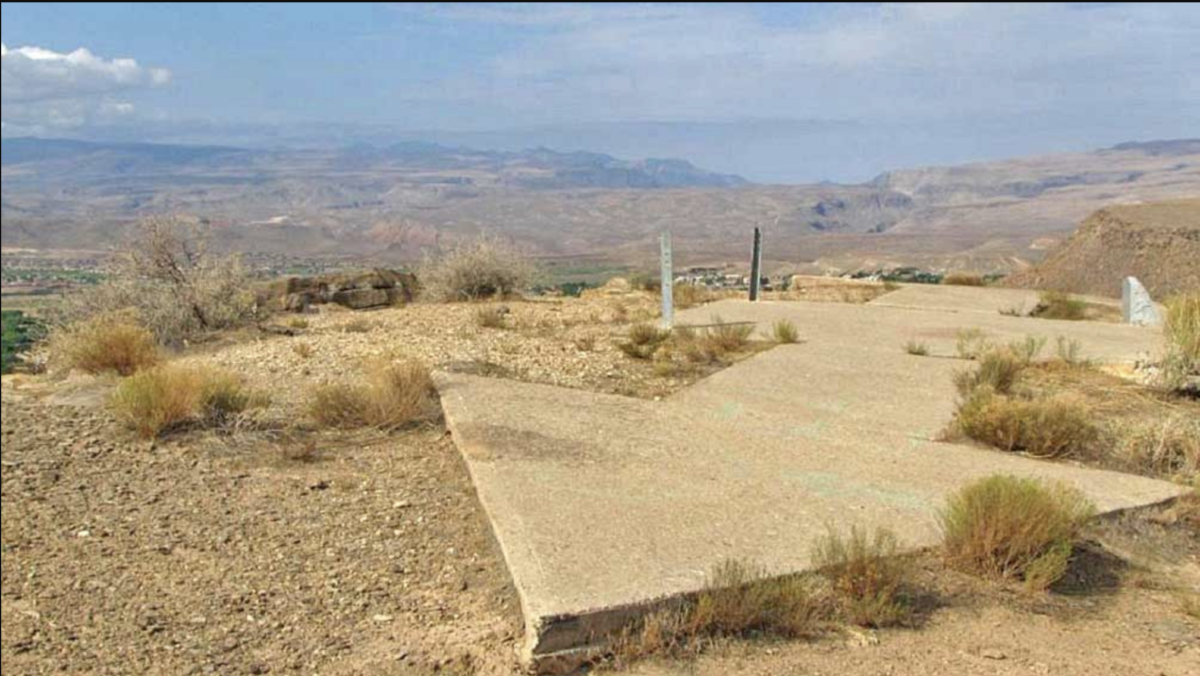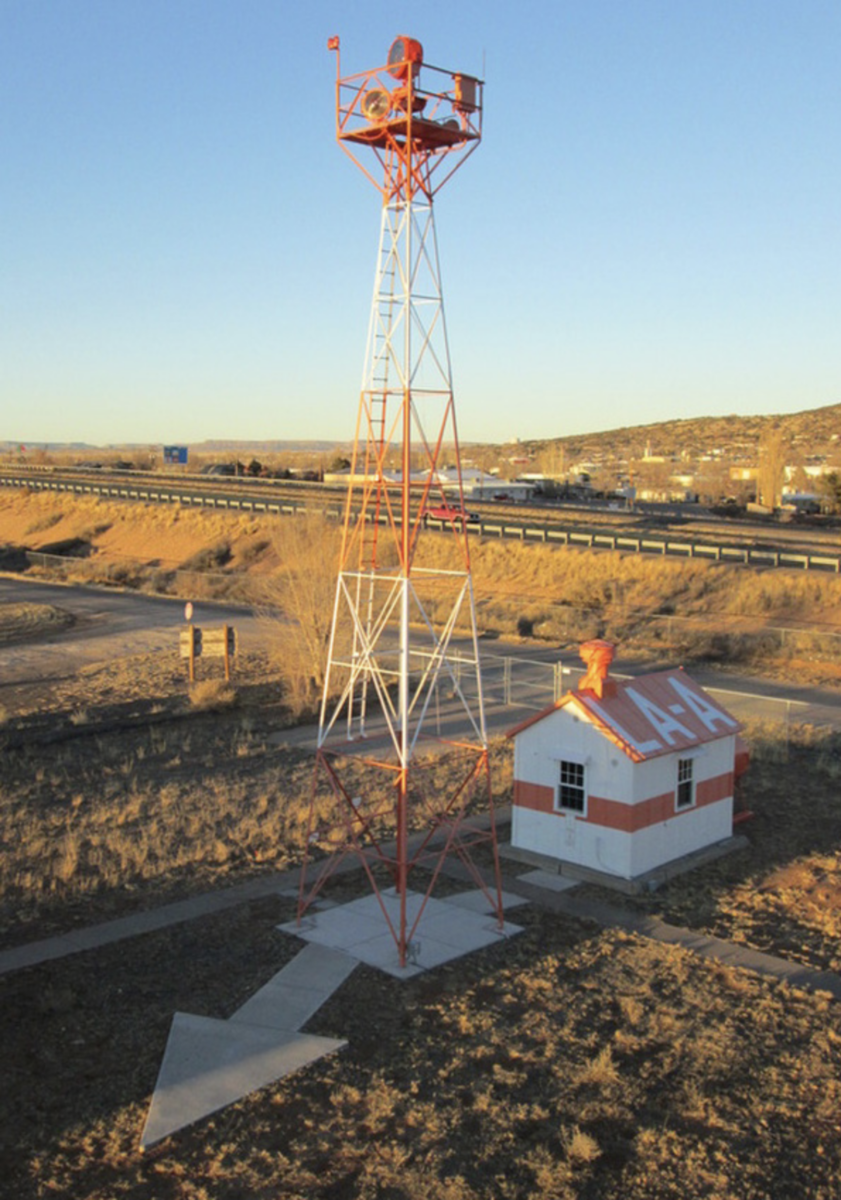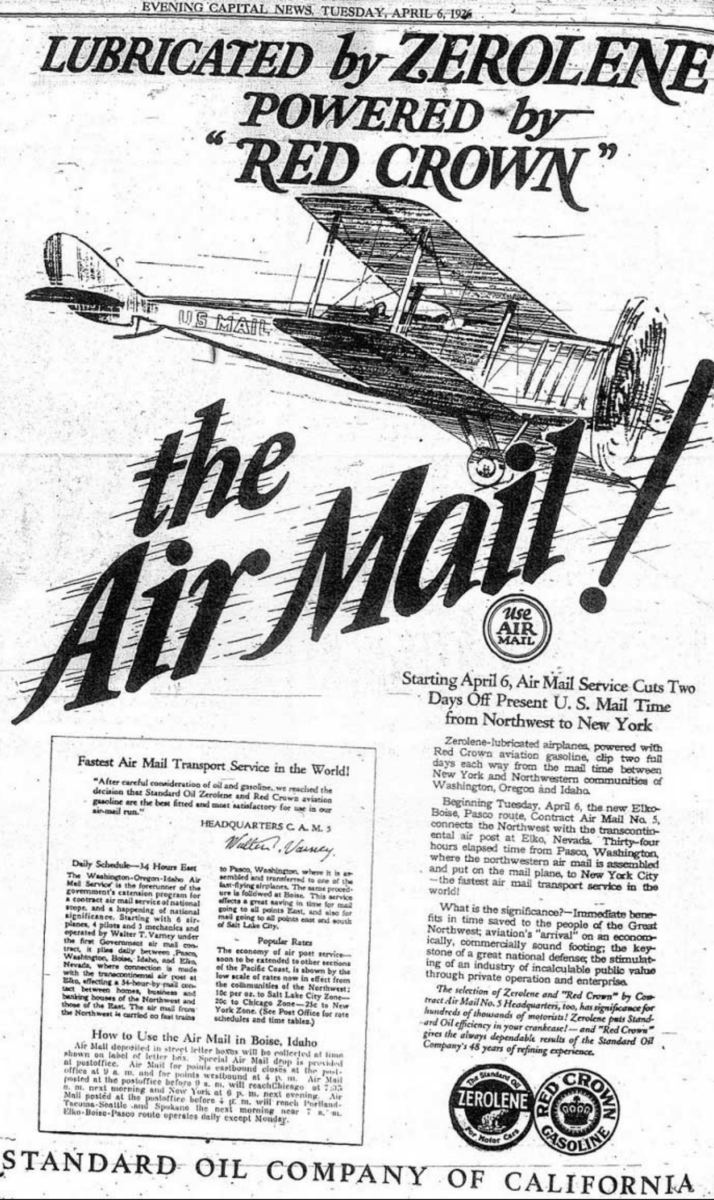Air traffic control, 1920’s style

by Joe Tarabino
COLORADO/ NEW MEXICO — Running across the empty landscapes and deserts of the southwest are a series of enormous concrete arrows, some up to 70 feet long, like images from a Chuck Jones’ Road Runner cartoon. These vestiges of once brilliant yellow arrows are some of more than 1,500 sites constructed between 1926 and 1932 after the US Postal Service proposed in 1924 a system of ground-based navigation beacons extending from New York to San Francisco. Rotating lights atop 50 to 60 foot towers were placed on concrete foundations in the shape of giant arrows, approximately 10 miles apart. Each arrow pointed to the next, and so on. One of the original reactions to the whole idea was expressed by an assistant to the US Postmaster General who opined, “Airmail is an impractical sort of fad and has no place in the serious job of postal transportation.”
In 1860, the Pony Express had revolutionized transcontinental mail with ten day delivery, but economics caused the system to fail to win mail contracts after its first year of operation. Sixty years after the Pony Express, on August 20, 1920, rapid transcontinental mail delivery made a return to the United States via air mail.
This was when radio and other technological advances were sweeping the nation, and the few pilots who did try to travel at night were taking their lives in their own hands. Almost ten percent of all early pilots died during the early days of the postal service’s airline initiative. With this new system a letter took about 83 hours to get across the country. The system was quickly expanded to include various north-south travel routes, including the Denver to El Paso route, and one linking El Paso to Pueblo, both of which was served by a company called the Varney Speed Lines Airway.
Six to seven arrows are in Colfax, Las Animas and Huerfano Counties
Three of these arrow locations, which also included small shacks with huge numbers printed on their roofs, exist in Colfax County, NM. Another two or three are in Las Animas County, CO and there is one in Huerfano County, CO. The arrows point in various directions, being part of different routes, but all served the same purpose.

Somewhere between Trinidad and Raton, a complete shack and tower sit in relatively good condition, according to the website, sometimes-interesting.com. There is no concrete arrow (Anyone knowing anything about this is asked to contact them).
Documented Colfax County sites are near Miami, Koehler, and Maxwell and, west of Wagon Mound, a lone tower still stands. Both of the latter locations and one on Rattlesnake Butte in Huerfano County (22 miles east of Walsenburg on CO Hwy 10) were used by the Denver to Albuquerque route. The two existing beacons in Las Animas County are on the Little Dome and near the old Barela town ruins, and were used for the Pueblo to El Paso Airway system.
By 1926, management of the system had been turned over to the Department of Commerce which continued the expansion of the system until, by 1930 navigation and radio technology had improved enough to allow flight guided by Low Frequency Radio Range without land-based visual guidance. The beacon system was to operate until 1933 and then, in the early forties, many of the towers were disassembled for their steel, a resource desperately need to support the war effort. During World War II many of the arrows were also destroyed so as not to help enemy pilots visually navigate the country.
The system had been expensive to build and operate. Not including the tower on which it rested, the beacon light cost $475; the automatic lamp changer, $50; lamps which lasted no more than 60 hours, $6.50 each; electricity from the generator averaged $50 to $80 per month; and five dollars per month was paid for someone to maintain the system and, usually, five dollars to lease the land from a local farmer. The overall cost of the system, adjusted for inflation, was more than $2.4 million per month.

Thanks to Marguerite Grace and Kelly Almand who contributed to the research of this story.




